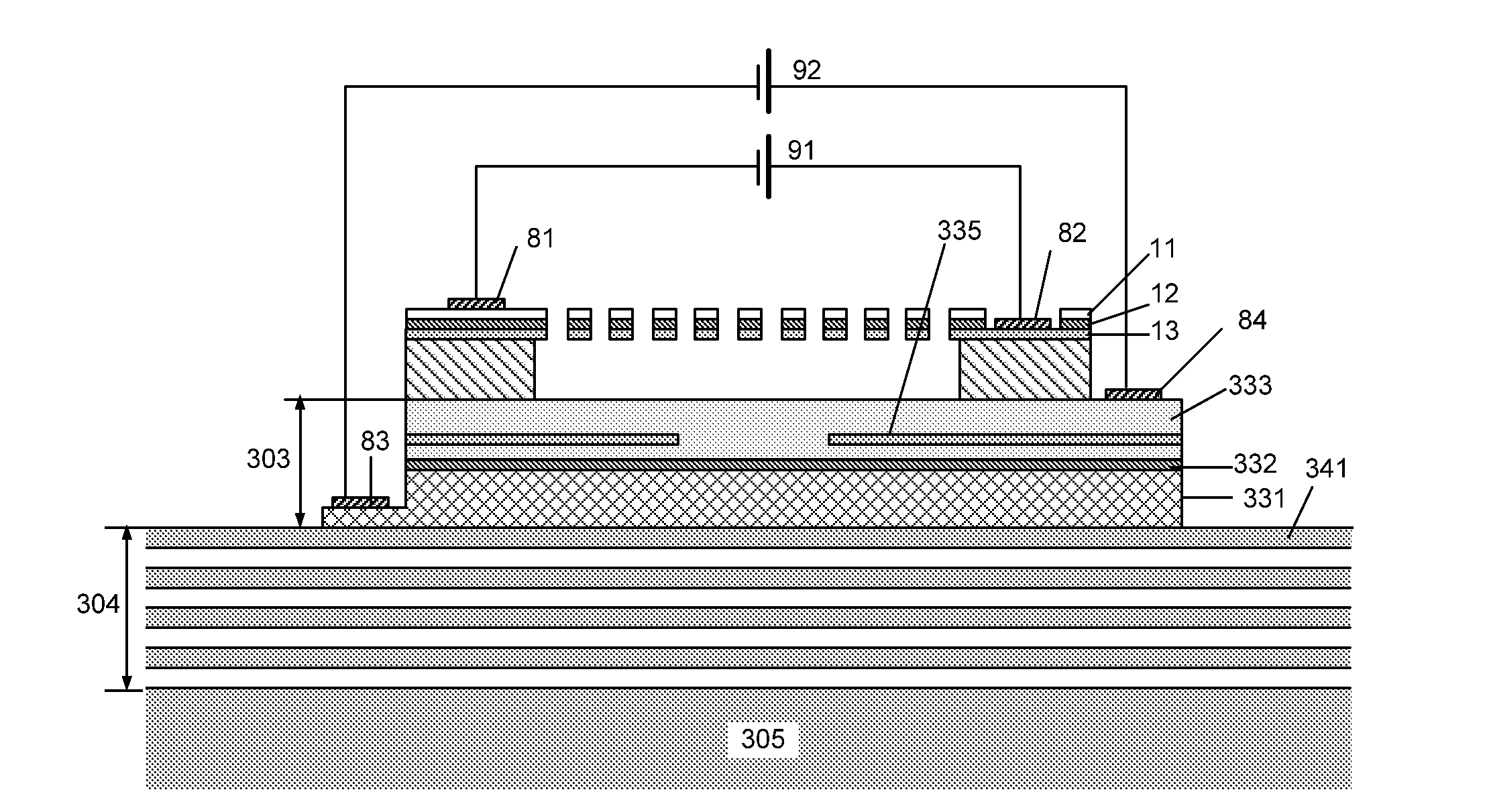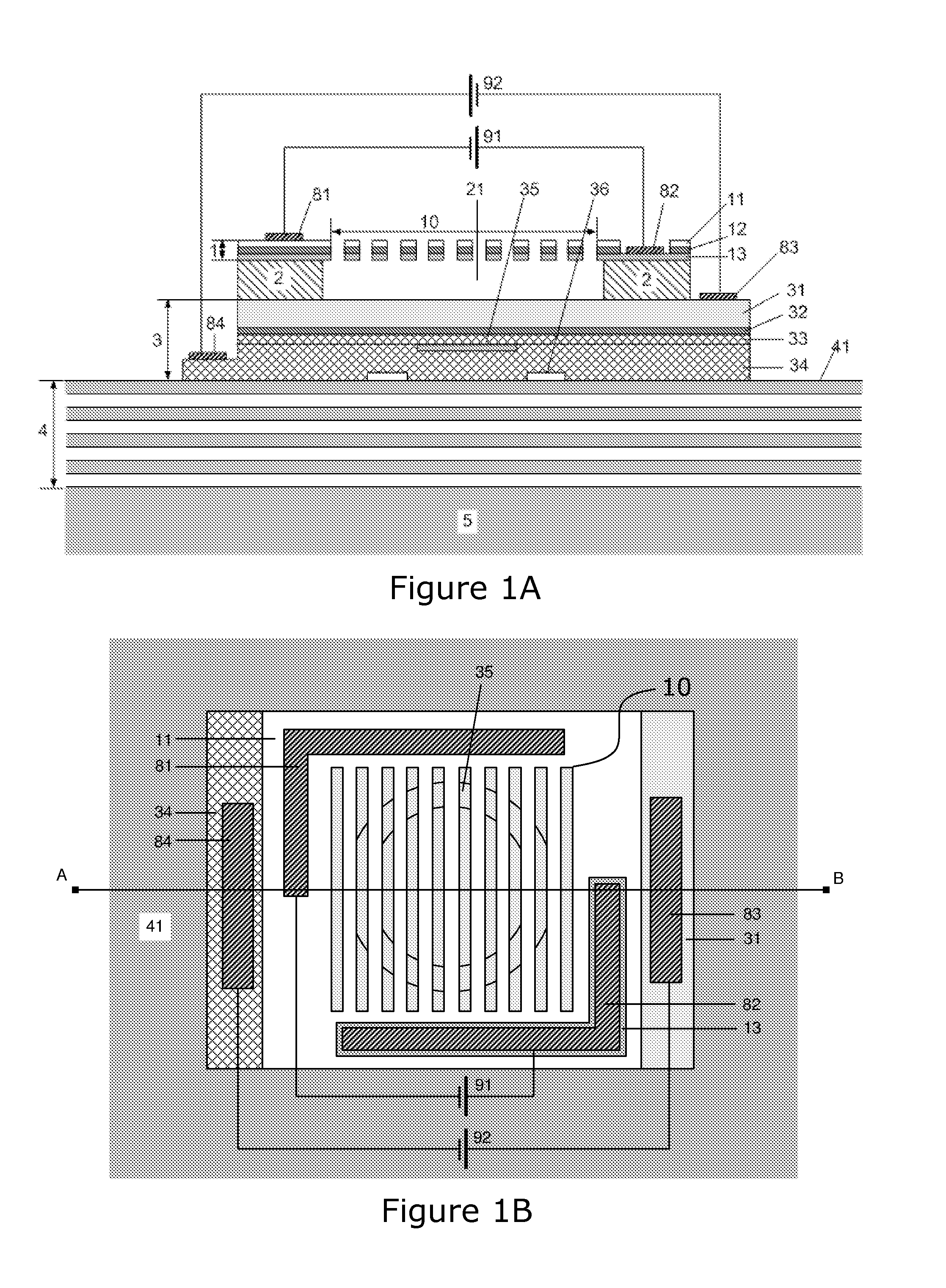Reflectivity-modulated grating mirror
a reflection-modulated grating mirror technology, applied in the direction of lasers, laser details, electrical equipment, etc., can solve the problems of difficult to increase the speed or reduce the energy consumption, the energy per bit of 357 fj/bit is remarkably small, and the transmission speed of the building block device is high, so as to achieve low power consumption, improve the obtainable data rate, and reduce the effect of energy consumption
- Summary
- Abstract
- Description
- Claims
- Application Information
AI Technical Summary
Benefits of technology
Problems solved by technology
Method used
Image
Examples
Embodiment Construction
[0056]FIGS. 1A and 1B show cross-sectional side- and top views of an example of the invention, respectively. In this embodiment, the device consists of a grating mirror 1 having an embedded electrooptic material 12 and a grating structure 10, an air gap 21 (or sacrificial layer 2), an active region 3, and a DBR 4 all held by substrate 5. Light is generated in the active material 32 which is typically QWs, is vertically amplified between the grating mirror 1 and the DBR 4, and is emitted through the grating mirror 1. The forward bias 92 for light generation is applied between the p contact 84 and the n contact 83. The injected current flows through the n-doped layer 34, the tunnel junction 35, the p-doped layer 33, the active material 32, and the n-doped layer 31. The reflectivity of the grating mirror 1 is modulated to modulate light emission. The reverse bias 91 is applied between the p contact 81 and the n contact 82. Thus, a strong electric field is induced in the electrooptic ma...
PUM
 Login to View More
Login to View More Abstract
Description
Claims
Application Information
 Login to View More
Login to View More - R&D
- Intellectual Property
- Life Sciences
- Materials
- Tech Scout
- Unparalleled Data Quality
- Higher Quality Content
- 60% Fewer Hallucinations
Browse by: Latest US Patents, China's latest patents, Technical Efficacy Thesaurus, Application Domain, Technology Topic, Popular Technical Reports.
© 2025 PatSnap. All rights reserved.Legal|Privacy policy|Modern Slavery Act Transparency Statement|Sitemap|About US| Contact US: help@patsnap.com



